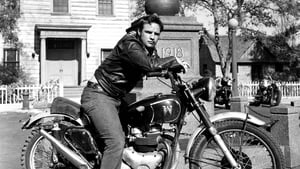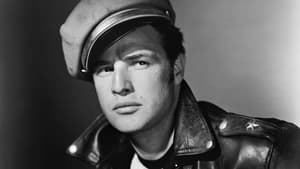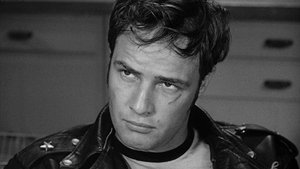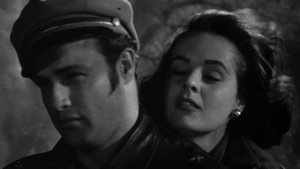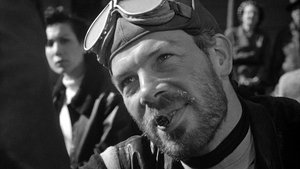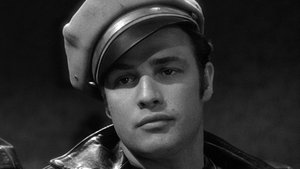Contact: [email protected]
Video Sources 0 Views
- Watch trailer
- The Wild One

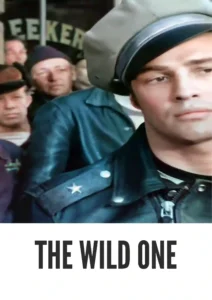
The Wild One 1953 First Early Colored Films Version
Synopsis
Table of Contents
ToggleThe Wild One 1953: A Rebel’s Journey Through the Early Days of Cinema (Review)

Introduction
In the annals of cinema history, few films have captured the spirit of rebellion quite like The Wild One 1953. Directed by Laslo Benedek, this iconic movie has left an indelible mark on the landscape of filmmaking since its release. Now, with the advent of early colorization techniques, viewers have the opportunity to experience this classic tale of youthful defiance in a whole new light. In this review, we delve into the world of The Wild One 1953, exploring its significance, impact, and the controversy surrounding its colorized release.
Check The Full Colorized Movies List
Check Our Colorized Movies Trailer Channel
Understanding The Wild One 1953: Director, Cast, and Genre
Directed by Laslo Benedek, The Wild One 1953 stars Marlon Brando in one of his most iconic roles as Johnny Strabler, the brooding leader of a motorcycle gang. Brando’s performance is complemented by a stellar cast that includes Mary Murphy as Kathie Bleeker and Lee Marvin as Chino, adding depth and nuance to the film’s narrative. The movie falls into the genre of drama and romance, with a gritty edge that reflects the rebellious spirit of its time.
Exploring the World of The Wild One 1953: Plot and Characters
The plot of The Wild One 1953 revolves around Johnny Strabler and his motorcycle gang, who descend upon a small California town and stir up trouble. When a rival gang led by Chino arrives, tensions escalate, leading to a series of confrontations that culminate in tragedy. Amidst the chaos, Johnny finds himself drawn to Kathie, the daughter of the town’s sheriff, sparking a forbidden romance that further complicates matters. As the conflict escalates, Johnny must confront his own demons and decide where his loyalties truly lie.
The Art of Film Colorization
Film colorization is a process that involves adding color to black and white films, offering viewers a new way to experience classic movies. While some argue that colorization detracts from the authenticity and artistic integrity of the original film, others believe that it breathes new life into old classics, making them more accessible to modern audiences.
Early Colored Films: A Brief History
The practice of colorizing black and white films dates back to the early days of cinema, with pioneers experimenting with various techniques to bring color to the silver screen. Over the years, advances in technology have made colorization more sophisticated, allowing filmmakers to enhance the visual appeal of classic movies while preserving their original essence.
The Wild One 1953 and Its Early Colored Version
The decision to release The Wild One 1953 in a colorized format has sparked debate among film enthusiasts. While some appreciate the opportunity to see the film in vibrant color, others argue that colorization alters the director’s original vision and detracts from the gritty realism of the story. Ultimately, the choice to watch the colorized version is a matter of personal preference, with viewers encouraged to experience both versions and decide for themselves which they prefer.
The Debate Over Film Colorization
The debate over film colorization has raged for decades, with proponents and opponents presenting compelling arguments on both sides. While some argue that colorization breathes new life into old classics and makes them more appealing to modern audiences, others believe that it compromises the artistic integrity of the original film and diminishes its historical significance. As technology continues to advance, the debate over film colorization is likely to persist, with no clear resolution in sight.
Examining The Wild One 1953 as an Early Colored Film
For fans of The Wild One 1953, the colorized version offers a fresh perspective on the film’s timeless story and iconic characters. While purists may prefer the original black and white format, the colorized version allows viewers to experience the film in a new light, highlighting details and nuances that may have been overlooked in the original release. Whether watching in black and white or color, The Wild One 1953 remains a powerful and thought-provoking exploration of youth, rebellion, and the search for identity.
Influence and Legacy: The Wild One 1953’s Impact on Cinema
Since its release, The Wild One 1953 has left an indelible mark on the world of cinema, inspiring countless filmmakers and artists with its bold storytelling and iconic imagery. The film’s influence can be seen in subsequent works, from the rebellious antiheroes of the 1960s to the gritty realism of modern-day dramas. With its timeless themes and unforgettable characters, The Wild One 1953 continues to resonate with audiences around the world, cementing its status as a true classic of cinema.
Director’s Cinematic Legacy: Beyond The Wild One 1953
Director Laslo Benedek’s legacy extends far beyond The Wild One 1953, with a diverse body of work that spans multiple genres and styles. While The Wild One 1953 remains one of his most celebrated films, Benedek’s influence can be felt across the cinematic landscape, inspiring future generations of filmmakers to push the boundaries of storytelling and visual expression.
Themes Explored in The Wild One 1953
At its core, The Wild One 1953 explores themes of rebellion, identity, and the search for belonging. Through the character of Johnny Strabler, the film examines the complexities of youth and the desire to break free from societal constraints. As Johnny navigates the tumultuous world of motorcycle gangs and small-town politics, he grapples with questions of morality and self-discovery, ultimately coming to terms with his own place in the world.
Reception and Controversy Surrounding The Wild One 1953
Upon its release, The Wild One 1953 garnered mixed reviews from critics, with some praising its gritty realism and powerful performances, while others criticized its portrayal of juvenile delinquency and social unrest. Despite the controversy, the film struck a chord with audiences, becoming a box office success and solidifying its place in cinematic history. Over the years, The Wild One 1953 has continued to provoke discussion and debate, inspiring countless interpretations and analyses from film scholars and enthusiasts alike.
Where to Watch The Wild One 1953 Online
For those eager to experience the rebellious spirit of The Wild One 1953, the film is readily available on popular streaming platforms such as Amazon Prime Video, Google Play Movies, and iTunes. Whether watching in its original black and white format or the early colored version, The Wild One 1953 promises to captivate audiences with its timeless story and unforgettable characters.
FAQs About The Wild One 1953
Is The Wild One 1953 based on a true story?
No, The Wild One 1953 is not based on a true story. While the film’s narrative draws inspiration from societal issues and cultural phenomena of its time, such as the rise of motorcycle gangs and youth rebellion, it is a work of fiction crafted by screenwriters from their creative imaginations. However, the film’s portrayal of these themes resonated with audiences and contributed to its lasting impact on cinema history.
Who are the main actors in The Wild One 1953?
The Wild One 1953 features a talented ensemble cast, led by the legendary Marlon Brando in the role of Johnny Strabler, the brooding and charismatic leader of a motorcycle gang. Mary Murphy delivers a compelling performance as Kathie Bleeker, a young woman caught in the midst of the gang’s turmoil. Lee Marvin adds depth and menace to the character of Chino, Johnny’s rival and the leader of a rival gang.
What is the significance of The Wild One 1953 in cinema history?
The Wild One 1953 holds significant importance in cinema history for several reasons. Firstly, it challenged conventional storytelling norms by exploring themes of youthful rebellion and social unrest in a raw and unfiltered manner. Secondly, it showcased the emerging talent of Marlon Brando, who would go on to become one of the most influential actors of his generation. Additionally, the film’s iconic imagery and memorable dialogue have left an indelible mark on popular culture, inspiring countless filmmakers and artists in the decades since its release.
Is the colorized version of The Wild One 1953 worth watching?
Opinions on the colorized version of The Wild One 1953 vary among viewers. While some purists may argue that colorization alters the film’s original aesthetic and detracts from its authenticity, others appreciate the opportunity to experience the story in a new light. Ultimately, whether the colorized version is worth watching depends on individual preferences and the desire to explore different interpretations of the film. Regardless of format, The Wild One 1953 remains a powerful and thought-provoking exploration of youth, rebellion, and the search for identity.
Conclusion
As viewers embark on their journey through the tumultuous world of The Wild One 1953, they are invited to explore the film’s themes of rebellion, identity, and the search for belonging. Whether watching in its original black and white format or the early colored version, The Wild One 1953 promises to leave a lasting impression, sparking discussion and debate for generations to come. As we reflect on the enduring legacy of this cinematic masterpiece, we are reminded of the power of storytelling to inspire, provoke, and challenge our perceptions of the world around us.


